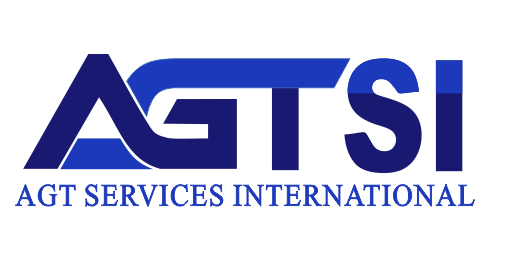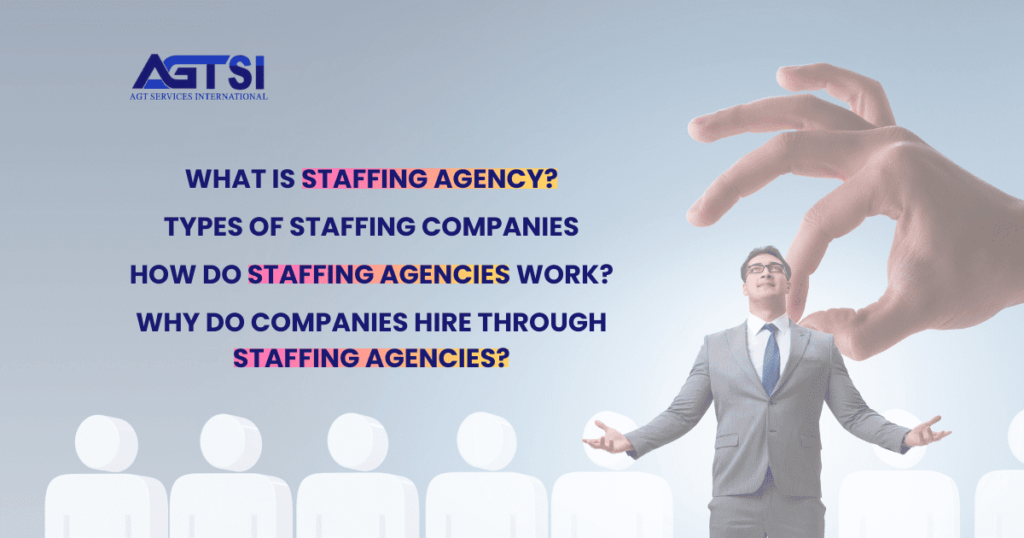Introduction:
Building a great team is super important for any business. Sometimes, companies get help from recruitment agencies to find the right people. In this guide, we’re going to talk about the different fees recruitment agencies charge and try to make sense of recruitment agency fee structure.
Understanding Recruitment Fees Types
Recruitment fees are the key to how businesses and recruitment agencies work together. These hiring fees help pay for the expenses of bringing in new employees through the recruitment agencies. Let’s take a closer look at different structures of recruitment fees and break down the different factors that make up the total recruitment cost.
Recommended: Art of Negotiating Recruitment Agency Fees With Clients
Recommended: Saudi HR Managers Can Follow to Choose the Best Manpower Recruitment Agency
Recruitment Agency Fee Structures | 8 Hiring Fees Types
Businesses often face the challenge of understanding different ways recruitment agencies charge fees. These hiring methods each have their pros and cons. Let’s explore the most common recruitment fee types to understand better how hiring fees work.

1. Percentage-Based Fees
In this way of recruiting, the recruitment agency charges a part of the money the employee makes in their first year. Let’s take a closer look at how this hiring method works, usually with the percentage being somewhere between 15% and 25%.
2. Retainer Fee Structure
Retainer fees mean paying a recruitment agency upfront for special hiring services. Retainer Fees take a bit longer, but this hiring type of retainer fee can save money. Companies pay upfront to keep the staffing services just for them, making an exclusive deal. Companies pay some of the fees at the start and the rest at different times during the hiring process. Usually, the total recruitment fee is between 15-25% of the employee’s first-year salary.
In a retainer fee agreement, the client pays the recruiter in several parts during different steps of the hiring process. Let’s break retainer fees down with an example:
How to Calculate Retainer Recruitment Fee Structure? Example
If the employee’s First-year salary is $90,000, the Retainer Fee is 4%, the Shortlist Presentation Fee 11% and when the Hire is made, the Fee will be 11%
Retainer Fee Calculation:
- Retainer Fee (Upfront)
- $90,000 (First-year salary) * 4% (Retainer Fee) = $3,600
- The client is required to pay $3,600 upfront as the retainer fee.
- Shortlist Presentation Fee
- $90,000 (First-year salary) * 11% (Shortlist Presentation Fee) = $9,900
- The client is required to pay an additional $9,900 as the retainer fee when the shortlist is presented.
- Hire is made Fee
- $90,000 (First-year salary) * 11% (Hire is made Fee) = $9,900
- The client is required to pay an additional $9,900 as the retainer fee when the candidate is hired.
- Total Retainer Fees
- $3,600 (Retainer Fee) + $9,900 (Shortlist Presentation Fee) + $9,900 (Hire is made Fee) = $23,400
In this example, the client would be obligated to pay a total of $23,400 in retainer fees, calculated based on the agreed percentages for each stage in the recruitment process.
Pros and Cons of Retainer Fee Structure in Recruitment Agencies
Retainer Fee Structure Pros:
A. Financial Security
Retainer fees help recruitment agencies feel financially secure. When a client pays upfront, it gives the hiring agency a steady income so that the recruitment agency can use its resources with more confidence.
B. Exclusive Commitment
Exclusive agreements often go hand in hand with retainer fee structures. This exclusivity means that the staffing agency is the only one allowed to find candidates for a particular job. This increases the likelihood of successfully filling that position.
C. Deeper Client Engagement
Retainer fee structure usually means you get paid at different times while finding the right person for a job. It helps build a strong relationship with the company, making it easier to work together and talk about hiring.
D. Higher Total Fee Percentage
The fee for a retained search assignment is usually more than in contingency agreements. Retainer fee structure is good for agencies, especially when the recruitment process takes a long time.
E. Thorough Candidate Search
In the retainer fee structure, Because the client pays in advance, recruiters can do a careful and thorough search to find the best person for the job.
Retainer Fee Structure Cons:
A. Upfront Costs for Clients
For clients, paying retainer fees upfront can be a challenge. This retainer fee structure is not ideal for companies with budget limits or those not sure how well the recruitment process will go.
B. Longer Recruitment Process
Retained searches often take longer due to the extended nature of the process. This extended timeline of retained searches might not be suitable for clients looking for quick hires.
C. Risk of Unsuccessful Placements
Con: In the retainer fee structure, you pay a special fee for exclusive hiring services; there’s no sure promise that you’ll find the right person for the job. If the recruiter doesn’t bring in the right candidate, you might wonder if the retainer fee structure was worth it.
D. Limited Flexibility
Con: Exclusive agreements mean the recruiting agency can only work on one job at a time. Exclusive deals can be a problem for hiring agencies that want to handle many job placements at once.
E. Strained Relationships if Expectations Differ
If the hiring agency and the client don’t agree on what they expect from the hiring process, using the retainer fee structure might cause problems in their relationship.
Recommended: What is Permanent and Contract Recruitment?
3. Contract Placement Fees Structure
In a contract placement fees structure, the staffing agency hires the employee and charges the client an extra fee. This contract fee, usually 1.5 times the employee’s earnings, helps cover costs. For example, if the employee makes $20 per hour, the hiring agency bills the client $30 per hour. These contract hiring structures also lead to chances for temporary work turning into permanent jobs.
How to Contract Placement Fee Calculation?
If the Employee’s Hourly Rate is $29 and the Markup Rate is 1.8%.
Contract Placement Fee = Employee′s Hourly Rate × Markup Rate
Contract Placement Fee = $29 \times 1.8
Contract Placement Fee = $52.20
Imagine the employee earns $29 per hour. The hiring agency adds a little extra, called a markup rate, which is 1.8 times the employee’s hourly rate. So, the total cost the recruitment agency charges the company for each hour the employee works is $52.20. This includes the employee’s pay and a fee for the staffing agency’s services.
Pros and Cons of Contract Placement Fees
Contract Placement Fees Structure Pros
A. Flexibility for Employers
Contract placement fees provide a flexible option for employers. The contract placement fee structure allows them to fill temporary positions when hiring is necessary without making the long-term commitment of hiring a permanent employee.
B. Quick Staffing Solutions
Contract placements help businesses meet temporary staffing needs or complete short-term projects by quickly filling important roles.
C. Reduced Hiring Risks
Before hiring someone for a long time, employers can check how well they do the job and if they fit in with the company. Contract placement fee structure helps lower the risk of hiring, especially for important jobs or companies that need special skills.
D. Cost Savings
Hiring someone on a contract fee structure can save money for employers because they don’t have to pay for things like benefits, long-term commitments, and training, which are usually needed for permanent hires.
E. Access to Specialized Skills
Contract placements allow us to bring in people with special skills and knowledge for a little while. The contract placement fee structure is handy for short projects or when our business has special needs.
Contract Placement Fees Structure Cons:
A. Potential for High Turnover
Temporary workers might leave for other jobs after the end of their contract, which means companies have to keep finding new people regularly. The contract fee structure can make it harder to keep a stable team.
B. Limited Employee Loyalty
Temporary workers might not feel as committed to the company because their roles are short-term. Contract placement structure could affect how well the team works together and their ability to collaborate for a long time.
C. Training and Onboarding Challenges
High employee turnover, or when people leave their jobs often, can create problems. One issue is that you have to keep bringing in new employees and teaching them, which might cancel out the money you saved at the beginning.
D. Risk of Skill Shortages
Relying only on contract workers might lead to a lack of skills in the company, especially if it’s hard to find contractors with high-level skills.
E. Potential for Disruption
Regular changes in team members can cause problems in how the team works together and the progress of projects, making it harder to get things done efficiently.
Recommended: How to Start a staffing Agency with No Money from Home?
4. Contingency Fees Structure
Contingency fee structure is a common way recruitment agencies make money. In the contingency fee structure model, hiring agencies get paid if they find the right person for the job. Usually, the fee is between 15-25% of the new employee’s first-year salary. Contingency fee structure is good for companies that often need to hire new people. Contingency hiring helps them save money because they only pay when the hiring agency successfully fills a job.
Contingency Fees Structure Example
Picture this: You have a deal to find someone for a job that pays $70,000 each year, and the set hiring fee for this deal is 19%. In the Contingency fee type of deal, companies only get paid if hiring agencies find the perfect person for the job. So, if a staffing agency finds that person, here’s how you calculate the contingency fee structure:
How to calculate the contingency fee structure?
Contingency Fee=Percentage Fee×Annual Salary
Contingency Fee=Percentage Fee×Annual Salary
In this case:
Contingency Fee=0.19×$70,000
Contingency Fee=0.19×$70,000
Now, let’s calculate it:
Contingency Fee=$13,300
Contingency Fee=$13,300
So, if the person the hiring agency helped find a job gets hired for a position that pays $70,000, the staffing firm gets a fee of $13,300. Just know that the recruitment fee is a percentage (19% in this case), and it can change based on the deal with the recruitment agency with the company looking for employees.
Pros and Cons of Contingency Fee Structure in Recruitment:
Contingency Fees Structure Pros
A. Risk Mitigation for Clients
If a company hires someone through a recruitment agency, they only have to pay the agency if the hiring is successful. Contingency fee structure helps the company avoid financial risks.
B. Motivates Quick Placement
Contingency recruitment fee structure motivates recruiters to quickly fill job openings because they get paid when they successfully find the right person for the job.
C. Wider Candidate Pool
In a contingency fee structure, Hiring agencies want to find the right people for jobs because it makes them happy. So, they usually look really hard to find the best candidates.
D. Suitable for Various Positions
A contingency hiring structure is suitable for jobs in the middle to lower levels or positions that may have more people applying.
E. No Upfront Costs
In a contingency fee structure, Clients are not required to make upfront payments, making it a more financially accessible option.
Contingency Fees Structure Cons
A. Quality vs. Quantity Dilemma
The contingency fee structure might focus more on hiring a lot of people quickly rather than choosing the best candidates. This recruitment fee could impact the quality of the hires they make.
B. Exclusivity Challenges
In the contingency fee structure, Several groups might be trying to fill the same job at the same time, which creates competition and makes it less exclusive.
C. Delayed Revenue for Agencies
In a contingency fee structure, Hiring agencies could experience late payments because their fees depend on successful hires, causing uneven money to come in.
D. May Disincentive Difficult Searches
In a contingency fee structure, Recruiters might skip tough searches or special jobs that take a long time to fill because they’re not sure if they’ll get paid.
E. Limited Client Commitment
In a contingency fee structure, Employers might not be fully engaged in the hiring process because they don’t have to spend money until they actually hire someone.
F. Potential for High Turnover
In a contingency fee structure, Focusing on fast job placements could mean putting people in jobs that might not be the best match for them in the long run.
Recommended: What is a Manpower Recruitment Agency?
5. Temp-to-Perm Fees Structure
There’s a new way businesses are hiring called Temp-to-perm (temporary to permanent). It’s like having a screening process with the job candidates. In this recruitment fee method, Temp-to-perm, candidates work for a short time under a contract to show their skills.
This helps employers see how good they are before offering a full-time job. Usually, the fee for this recruiting service is between 15-25% of the salary of the job candidates.
The staffing cost might change based on how long the person works. For example, if the hiring fee was 20%, and the person worked for just one month in a year with a yearly salary of $50,000, the adjusted fee could be $9,166.66. This way, businesses can be safer in their hiring process.
Temp-to-Perm Fees Structure Example
If the Temp-to-perm Fee is 22% of the employee’s first-year salary. Duration of Temporary Employment: 4 months. Consider the employee’s first-year annual salary is $60,000.
How to Calculate Temp-to-Perm Fees?
Determine the Annual Salary: Assume the employee’s first-year annual salary is $60,000.
Calculate the Total Fee: Apply the Temp-to-perm Fee percentage to the annual salary.
Fee = 22% of $60,000
Fee = 0.22 * $60,000 = $13,200
Calculate the fee proportionally for 4 months: Since the employee has worked for 4 out of 12 months, we adjusted the fee proportionally.
Prorated Fee = (Number of months remaining / Total months in a year) * Total Fee
Prorated Fee = (8 / 12) * $13,200
Prorated Fee = $8,800
In this situation, let’s say the company hires a temporary worker, and the recruitment agency charges a 22% fee to make them a permanent employee. If the temporary worker has been on the job for 4 months, the company would need to pay $8,800 to the hiring agency. This adjusted Temp-to-perm fees structure fee is fair because it takes into account the time the worker spent as a temporary employee.
Pros and Cons of Temp-to-Hire Arrangement Fees
Temp-to-Hire Structure Fees Pros
A. Cost Flexibility
Temp-to-hire setups can be flexible with payments. You might pay fees during both the temporary and permanent parts.
B. Risk Mitigation
In the Temp-to-perm fee structure, Employers can check if a person is a good match for the job by having them work temporarily before deciding to hire them permanently. This Temp-to-perm fee structure helps reduce the chance of hiring someone who might not be the right fit.
C. Working Interview
Temp-to-hire is like a trial at work. Employers get to see a candidate’s skills, how they work, and if they fit in with the organization’s culture.
D. Smooth Transition
Moving a temporary worker into a permanent position is usually easier because they already know how the company works and how things are done.
E. Cost Savings
If the plan leads to hiring someone permanently, the total hiring cost might be less than using the usual ways of finding new employees.
Temp-to-Hire Structure Fees Cons
A. Upfront Costs
The starting fees for the Temp-to-perm deal might cost more than regular temporary staffing fees, making the initial hiring expenses go up.
B. Extended Decision Period
The trial period when someone is working on a temporary basis might take longer before a final decision is made about hiring them permanently. This temp-to-perm hiring structure could slow down the process of filling the regular job position.
C. Limited Candidate Pool
Depending only on temporary job offers could make it harder to hire some people who want permanent jobs right away.
E. Employee Expectations
Temporary workers may expect different things about their job, benefits, or pay, which can sometimes cause confusion when they become permanent employees.
F. Competitive Market
In places where there are a lot of people looking for jobs, really skilled temporary workers might get job offers from different companies while they’re being checked out.
Recommended: What is Staffing Agency? Types of Staffing Companies
6. Flat Rate Fee structure
Flat rate fee structures are a smart way to hire people, especially if a company needs to hire a lot of new workers often. Flat rate fee structures are not usual, but this recruitment fee type is good for big companies that hire many people. Instead of paying a different amount based on a person’s salary, with flat rate fees, you pay a fixed amount.
This recruitment fee structure can be great if a company wants to make special hiring or has the exclusive rights to work with a recruiter. Even though not many companies use flat rate fees, they can help in negotiations and make it so that a recruiter only works with one company.
Flat rate fee structures are best for jobs that don’t need a lot of experience and for companies that always need to hire new people. Flat rate fees help to keep costs clear and let companies order many workers at once.
Pros and Cons of Flat Rate Recruitment Fees Structure
Recruitment agencies use different ways to charge fees, and one of them is the flat rate fee. This model has both good and not-so-good points. Let’s look at the pros and cons of this simple approach.
Flat Rate Recruitment Fees Model Pros:
A. Cost Efficiency for High-Volume Recruiting
Flat rate fees are a good deal for companies that hire a lot of people. This recruitment fee structure system lets them bring in many new employees without spending more money as they hire more. A flat rate fee structure is a money-saving choice for businesses that need to hire regularly.
B. Predictable Budgeting
The flat rate makes it easy for companies to plan their budget during the hiring process. Companies can set a fixed budget and be sure about the hiring costs for each new hire, no matter how much the person will be paid for the job.
Flat Rate Recruitment Fees Model Cons:
A. Potential Quality of Service Concerns
Because the flat rate stays the same no matter how hard or easy the job is, some people worry that the hiring service might not be as good. This is because the recruitment agencies might not spend as much time and effort on each search, and that could make the hiring process not as careful as it should be.
B. Exclusivity Requirements
Some hiring agencies might ask for exclusivity, which means the companies can only work with one recruiter at a time. Exclusivity requirements show the recruitment agency is committed, but it also means the companies have fewer choices.
Recommended: Types of Recruitment Agencies
7. Hourly Rate Recruitment Fee Structure
The hourly rate recruitment fee structure is like paying for the time a hiring agency spends finding the right person for a job. Hourly rate recruitment fee structure is commonly used when companies need temporary or contract workers, especially for important positions. The hourly rate covers different tasks, such as finding candidates and managing the hiring process.
This way of paying is flexible because the client only pays for the exact time and effort spent on the job search. The hourly rate is decided before the project begins, and it’s important to know what actions are included in the billing. Unlike other ways of paying recruitment agencies, where fees are a percentage of the new employee’s salary, the hourly rate is more detailed in paying for specific hiring services.
Companies choose the hourly rate hiring fee structure when they want continuous help from the staffing agency in finding great employees without making a big upfront payment. Few Examples of hourly rate recruitment fee structure companies is Fiverr, Upwork, Toptal, Jooble, Freelancer.com, Flexjobs.
Pros and Cons of Hourly Rate Recruitment Fee Structure
Recruitment agencies use different ways to charge fees for their services, and one way is called the hourly rate fee structure. Now, let’s check out the good and not-so-good things about this type of recruitment fee.
Hourly Rate Recruitment Fee Structure Pros
A. Transparent Billing
The hourly rate fee structure is like paying for the time spent on finding the perfect candidate. The hourly rate fee structure is clear and easy to understand, so organizations know exactly how much they’re paying for the recruitment process.
B. Cost Control
Companies save money better with hourly rates. Unlike fees based on what a worker earns, the hourly rate stays the same. Hourly rate fee structure helps organizations know exactly how much they’ll spend on hiring.
C. Flexible for Specialized Roles
The hourly rate model works best for special jobs or high-level positions. These high-level roles need a thorough search to find the best candidates. With an hourly rate recruitment fee model, agencies can spend the time and effort needed to find really great talent.
Hourly Rate Recruitment Fee Structure Cons:
A. Expense Concerns
One possible problem with the hourly rate fee structure is that if it takes a long time to hire someone, it could cost more money. Even though the hourly rate makes things clear, if it takes a really long time, the overall recruitment cost for the company might go up.
B. Potential for Conflict of Interest
In this recruitment fee type, a problem might come up. The recruitment agencies could be encouraged to make the hiring process longer to earn more money for the hours they work. Conflict of interest might slow down the time it takes to hire someone.
C. Not Ideal for Swift Placements:
The hourly rate system might not work well for companies that want to fill positions quickly. It does not work well for organizations because it highlights hiring processes that take a lot of time and that don’t match the need for some businesses to fill positions quickly.
Recommended: How to Start a Recruitment Agency?
8. Hybrid recruitment Fee Structure
The hybrid recruitment fee structure is like a mix of different HR payment plans. Imagine you pay a fixed amount for the first step of recruitment, like finding and checking potential candidates. After that, you might pay for the time spent on interviews, like an hourly rate. If you decide to hire someone, then a part of the new person’s salary becomes the final fee.
In this recruitment fee type, you know exactly what you’re paying for certain hiring steps and have some flexibility with the rest. A hybrid Recruitment fee structure is good for organizations that want to balance costs but are willing to invest more for the right person.
Recommended: How To Choose The Right Recruitment Agency For Your Business?
Exclusive vs. Non-Exclusive Contracts in Recruitment:
Making the right choice between exclusive and non-exclusive contracts is important in the recruitment process. Exclusive agreements mean only one staffing agency can place candidates for a position or company, often preferred for high-level roles. On the other hand, non-exclusive contracts carry the risk of another hiring agency placing a candidate first, potentially leaving the employment agency with no payment.
Most talent acquisition agencies aim for exclusivity, as it guarantees payment upon successfully filling the position.
Factors Influencing Recruitment Fee Structures
Exploring recruitment fees and how hiring fees are set, recruitment agencies consider factors like how much a job is needed, how hard it is, and how experienced and knowledgeable the recruiter is. In areas where there’s a strong demand for certain skills, hiring fees usually go up because more people want those skills.
Also, jobs that are complex and need special knowledge can lead to higher recruitment fees due to the extra effort required to find the right person.
1. Industry and Job Type
The way companies hire people depends on the kind of work and industry they’re in. For example, in industries where lots of companies are trying to get the best workers, like finance, hiring for really important jobs can take a long time. Companies need to check the person’s background a lot and have many interviews.
Because it’s more work like checking, employing background and interviews, the fees for finding and hiring someone can be higher. But in industries where there’s less competition, like for simpler jobs, the recruitment process might not be as low, so the hiring fees could be lower.
2. Candidate Demand and Availability
In the process of selecting people for jobs, it’s important to consider how much people want a job and how many jobs are out there. Imagine it like a movie that keeps changing, with the number of jobs and people looking for them always moving.
When lots of companies really need people with specific skills or for certain jobs, the recruitment agencies that help find these people might charge more money. Staffing agencies do this because it’s harder to find the right people when not many are available. On the other hand, if there are plenty of people with similar qualifications, these hiring agencies might be ready to talk about lowering the recruitment cost to get the job done.
3. Recruitment Agency Expertise and Reputation
Choosing a hiring agency means thinking about how good they are at their job and what people say about them. Considering how well they do their job and what others say about them really affects how much they charge. If a recruitment agency is really good or has a good history, they might ask for more money.
Agencies charge more money because they believe their HR skills are worth it, especially in finding the best candidates. Having a good standing is important because staffing agencies that have helped others find jobs can ask for more money, showing they are really good at talent acquisition.
4. Geographical Location’s Impact on Recruitment Fees
Regional differences really affect how much it takes fees to hire employs. It depends on where your company are – like how expensive it is to live there and how many other companies are looking for workers. It’s helpful to work with recruitment agencies that know the area well. Familiar with the area makes it easier for companies to talk about reasonable and competitive hiring costs. Figuring this out is a bit tough, so companies need to think carefully about what they need and work closely with the hiring agencies.
Are Recruitment Services Worth the Fees?
This important question depends on a few things like how quickly you need to hire, how much money the company has, and the possible benefits in the long run. Some companies have their own recruiters and can decide if the costs are worth the time spent. But for many businesses, it’s about thinking about the stress of finding the right people, doing interviews, and saving time overall. Usually, paying for recruitment services is considered a good idea because the time saved can be more valuable than the money spent upfront, especially in the short term.
Final Thoughts:
In our detailed look at how recruitment agencies charge fees and recruitment agency fee structure, We’ve covered various hiring firms’ fee structures, things to think about, and factors that businesses should consider while selecting a recruitment agency fee structure. With this information, businesses can confidently work with recruitment agencies, making smart choices that match their hiring requirements.




















